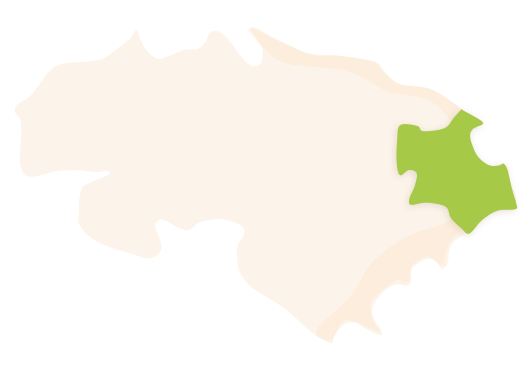Xàbia is the easternmost town of La Marina Alta, sitting on the southern slope of the Montgó mountain. It is situated at just 12 metres above sea level. Covering an area of 68.6 km², it comes in second with regards to its geographical expanse, behind only that of Benissa. It has a population of 27,983, known as Xabiencs and Xabienques.
 Xàbia's municipal district. Surface area: 68.6 km². Population: 27,983 (INE data 2021).
Xàbia's municipal district. Surface area: 68.6 km². Population: 27,983 (INE data 2021).HISTORY
The terrain of Xàbia, surrounded by mountains and sea, is framed by the foothills of Les Planes del Cap de Sant Antoni to the north, Montgó to the north-west, the basin of the River Gorgos that crosses the municipal area from west to east, and the mountains of La Granadella and El Cap de La Nau to the south.
It has two traditional population centres: the historic centre, with origins in the 14th century, and Duanes de La Mar. From prehistory until the Christian feudal conquest, different periods have followed one another over the course of centuries leaving a rich, historical and cultural legacy right up until the present day. The area has yielded findings in the cave known as Cova Foradada dating back thirty thousand years, as well as evidence of the earliest occupations of the cave of Montgó and the cave of the ravine known as Barranc de Migdia, providing us with a Neolithic collective burial site, home to a very important collection of schematic rock paintings of religious or cult significance.
Bronze Age remains have been discovered in small settlements on the tops of hills such as Santa Llúcia, Cap Prim, L'Alt de Capsades and Tossalets, with the treasure of Iberian origin, “el tresor ibèric de Xàbia” (5th century BC), being of particular interest.
Numerous remarkable archaeological sites exist from the Roman era. Those which stand out are the necropolis called La Necròpolis del Muntanyar, the Roman baths known as Els Banys de La Reina and the irrigation channel, La Séquia de La Sénia, the last of these being related to industrial salt production. From the period of Al-Andalus, the Muslims left their mark above all in the fields of archaeology and place names.
As a result of Christian conquests, Xàbia became an eminently Christian town, along with Pego, Teulada and Calp. As happened in the rest of La Marina Alta, the 15th century was marked by Berber pirate attacks and the subsequent fortification of the coastline, forcing Xàbia to extend its protective walls.
During the War of Succession, Xàbia sided with the Bourbons and, on finishing the war, King Felipe V granted it commercial privileges for the port as well as the fleur-de-lis, which is still seen in its coat of arms. From that moment on, as a result of the export and trade of raisins, Xàbia experienced great economic growth. As a result of this prosperity, the town saw an important infrastructural and urban growth, including the construction of the port along with other buildings that no longer exist such as a theatre, a sports court designed for playing pelota, and a bull ring.
FESTIVITIES
- The market, fair and festivities known as La Fira i El Porrat de Sant Antoni, take place from the 7th until the 31st of January.
- The bonfires of Sant Joan are celebrated from June 6th until the 24th. The festivities end on the night of the 24th with the lighting of the bonfire and a spectacular pyro-musical fireworks display.
- The Portitxol festa is held on the second Sunday in August.
- Marking the end of summer, from the end of August until September 8th, Duanes de La Mar celebrates the ancient festivities of its patron saints, La Mare de Déu de Loreto and El Crist de La Mar (Christ of the Sea).
- On December 13th, Santa Llúcia is celebrated with a simple program that combines religion and traditional festivities.
GASTRONOMY
- ”El polp amb penca” (octopus and chard stalk stew).
- “El madroc”.
- ”El suquet roig” (traditional fish, tomato and paprika stew).
- ”El cruet de peix” (traditional fish and potato stew).
- ”L’arròs de renda” (rice broth with snails).